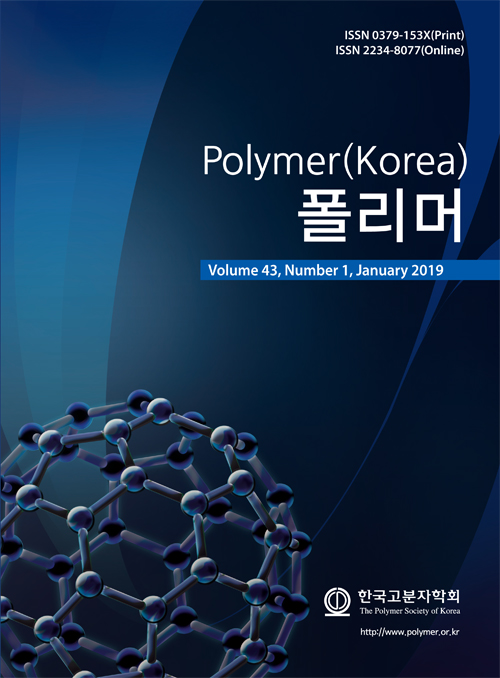- Microencapsulation of Thermoplastic Polyurethane by Solvent Evaporation Method
Department of Polymer Science and Engineering, Pusan National University, 2, Busandaehak-ro 63beon-gil, Geumjeong-gu, Busan 46241, Korea
- 용매 증발법을 이용한 열가소성 폴리우레탄의 마이크로 캡슐화
부산대학교 고분자공학과
It is essential to encapsulate vulcanizing agent and vulcanizing acceleration agent to enhance their dispersion and block the undesirable crosslinking by the heat generated during the kneading process in rubber manufacture. And the microcapsules are melted at the vulcanization temperature and controlled to release the vulcanizing agent and the vulcanization accelerator. Then the microencapsulation would ultimately promote the formability and ease of the manufacturing process of rubber product. As a wall material, thermoplastic polyurethane (TPU), where the content of the hard segment and the soft segment can be controlled to obtain the desired melting point and mechanical strength, was used, and microcapsule was made by solvent evaporation method. Also TPUs which were durable to the temperature of 120 ℃ and the tensile stress of 13MPa and melt at the vulcanization temperature of 150 ℃ were achieved, and then the application to the rubber manufacture process was discussed.
고무 제조의 초기 공정인 혼련 공정에서 발생하는 열로 인한 고무의 바람직하지 않은 사전 가교를 방지하고 분산성을 높이기 위해 가황제와 가황 촉진제를 마이크로 캡슐화한다. 이후 마이크로 캡슐은 고무 제조의 후 공정인 성형 공정에서 용해되어 가황제와 가황 촉진제를 방출하게 한다. 이에 마이크로 캡슐화는 궁극적으로 고무 제품의 제조 공정의 용이성과 경제성을 개선할 수 있다. 마이크로 캡슐의 재료로는 하드 세그먼트와 소프트 세그먼트의 함량을 조절하여 원하는 융점과 기계적 강도를 얻을 수 있는 열가소성 폴리우레탄을 선택하고 용매 증발법으로 마이크로 캡슐을 제조하였다. 또 제조한 마이크로 캡슐의 열적 성질과 기계적 성질을 조사하여 혼련 공정에서 발생하는 120 ℃의 열과 13 MPa의 인장 응력을 견디고 가황온도인 150 ℃에서 녹는 시료를 선정하였으며, 실제 공정에의 적용가능성을 검토하였다.
Keywords: microcapsule, thermoplastic polyurethane, solvent evaporation method, vulcanizing agent, rubber
- Polymer(Korea) 폴리머
- Frequency : Bimonthly(odd)
ISSN 0379-153X(Print)
ISSN 2234-8077(Online)
Abbr. Polym. Korea - 2022 Impact Factor : 0.4
- Indexed in SCIE
 This Article
This Article
-
2019; 43(1): 92-98
Published online Jan 25, 2019
- 10.7317/pk.2019.43.1.92
- Received on Aug 2, 2018
- Revised on Sep 26, 2018
- Accepted on Oct 1, 2018
 Correspondence to
Correspondence to
- Nam-Ju Jo
-
Department of Polymer Science and Engineering, Pusan National University, 2, Busandaehak-ro 63beon-gil, Geumjeong-gu, Busan 46241, Korea
- E-mail: namjujo@pusan.ac.kr










 Copyright(c) The Polymer Society of Korea. All right reserved.
Copyright(c) The Polymer Society of Korea. All right reserved.